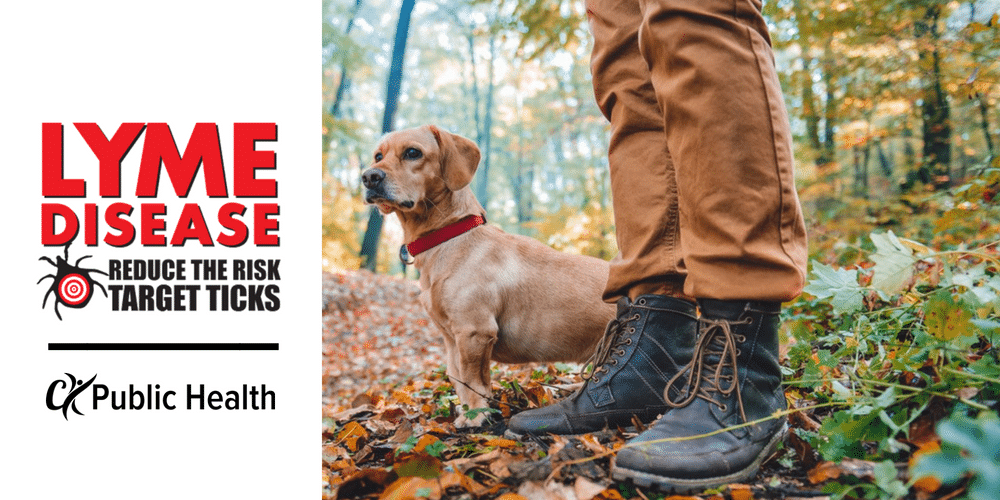Lyme disease is caused by bacteria spread by the bite of an infected blacklegged tick. The best way to protect yourself from Lyme disease is to prevent tick bites. Here are five things you can do to reduce your chances of Lyme disease:
1. Cover up!
Wearing long sleeved shirts and pants keeps ticks off your skin where they can latch on and bite. If you’re super keen, tuck your pants into your socks and your shirt in your pants to block ticks from crawling onto your skin. Wearing light-coloured clothes will also make ticks easier to spot.
2. Wear bug spray.
Spray insect repellent containing DEET on your skin and clothes. Always follow the manufacturer’s directions.

Ticks love long grass and moist, wooded areas. Stay on the path to protect yourself from Lyme disease!
3. Avoid tick-friendly areas.
Ticks love wooded areas and long grass where they lie in wait and grab on to passers-by. Avoid ticks by keeping to clear paths while hiking and staying out of long grass.
4. Shower and do a tick check.
Jump in the shower after spending time outdoors and check yourself closely – ticks can be hard to see! Nymphs may look like small, black or brown bumps. Be sure to check these tick hotspots:
-
- In and around your ears
- In your hair
- Under your armpits and behind your knees
- In your bellybutton and around your waist
- Between your legs (and other warm areas)
5. Remove ticks pronto.
If you find a tick on your body, remove it immediately. Removing an attached tick within 24 hours may reduce your chance of infection. Using a pair of tweezers, firmly pull the tick straight up. Don’t kill it! Put the tick in a sealed container and bring it to the Chatham-Kent Public Health Unit for identification.
Questions? Contact the Chatham-Kent Public Health Unit at 519.355.1071, ext. 2902 or ckhealth@chatham-kent.ca.
For more information about how you can protect yourself from Lyme disease, visit the Government of Ontario’s website here.

